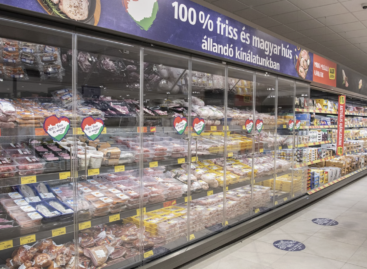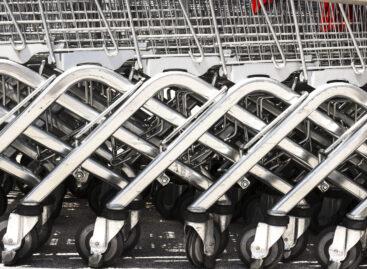The 2022 ranking of FMCG retailers is out now – Unbeatable top 3
2022 was yet another year when discounters continued their superb performance. This is why it isn’t surprising at all that Lidl held on to the No.1 spot with a comfortable advantage. However, in the past the discounter trio of Lidl, Penny and Aldi used to finish the “race” in this order, but this time Aldi jumped from the 9th spot to the 6th position in the ranking, with an approximately 30% sales growth that was similar in size to Lidl’s.
This article is available for reading in Trade magazin 2023/6-7.

Zsuzsanna Hermann
managing director-editor-in-chief
Trade magazin
Thanks to this, Aldi has overtaken Penny, and even though the sales revenues are about the same, their store numbers differ significantly. It must be noted that Penny didn’t waste its time either, as the chain also took a step up and finished 7th in the ranking.
“This year our magazine ranked 15 retailers, more than in the previous years, as more and more firms reach the sales revenue that qualifies them for making it to the list” – says Zsuzsanna Hermann, CEO and editor-in-chief of Trade magazine, the publisher of the annual FMCG retailer ranking. “New players such as Kerekes, Napcsillag and Dél-100 had unprecedented years in terms of business success. If we take a close look at the sales growth of these “small” chains, what we see is stunning! This is true even if we are aware of the fact that high inflation boosted the sales revenues of every retail chain” – adds the editor-in-chief.
From the hypermarkets it was SPAR and Tesco who managed to keep their positions, and even if Auchan dropped from the 6th to the 9th place, we can’t argue with the fact that based on sales revenue and store number, Auchan proved to be the most efficient form all the retailers in the ranking.
Analysing the drugstores on the list a little, we are witness to a sales growth developing just as expected, and some of them stand out with a spectacular performance, such as the smallest chain Dél-100, which put the company on the list this year.
There has been no change in the “trinity” of the biggest Hungarian retail chains, so their order is the same as before, they all produced a double-digit sales growth too, but it is also true that this growth didn’t reach the level of the inflation. Probably the growth of the smaller Hungarian chains surprises everyone, as their numbers suggest there is an exceptionally successful business strategy in the background.
“This year there are two new columns in the table” – informs Trade magazin’s CEO. “One of them shows the number of employees, with which we would like to call attention to the importance of how many people are working in the sector, as this is an issue that the Central Statistical Office (KSH) puts in the spotlight every year. The table reveals that multinational retailers alone were employing nearly 58,000 people last year” – explains Zsuzsanna Hermann. The other new column is for the retail tax – the importance of this needs no explanation. Data in the table informs that the tax contribution of multinational retail chains surpassed HUF 130 billion in 2022! //
Related news
The newest PENNY store opened in downtown Szolnok
🎧 Hallgasd a cikket: Lejátszás Szünet Folytatás Leállítás Nyelv: Auto…
Read more >Another butter price cut: ALDI halved the prices of several popular butters this year
🎧 Hallgasd a cikket: Lejátszás Szünet Folytatás Leállítás Nyelv: Auto…
Read more >Milestone in Hungarian sustainable architecture: PENNY opened the country’s first purely wooden store in Aba
🎧 Hallgasd a cikket: Lejátszás Szünet Folytatás Leállítás Nyelv: Auto…
Read more >Related news
The HORECA sector joins forces with Alimentaria+Hostelco to mark the future of hospitality
🎧 Hallgasd a cikket: Lejátszás Szünet Folytatás Leállítás Nyelv: Auto…
Read more >Challenges of the retail sector: retail has become more crisis-resistant
🎧 Hallgasd a cikket: Lejátszás Szünet Folytatás Leállítás Nyelv: Auto…
Read more >How to avoid the hassles of online shopping?
🎧 Hallgasd a cikket: Lejátszás Szünet Folytatás Leállítás Nyelv: Auto…
Read more >






